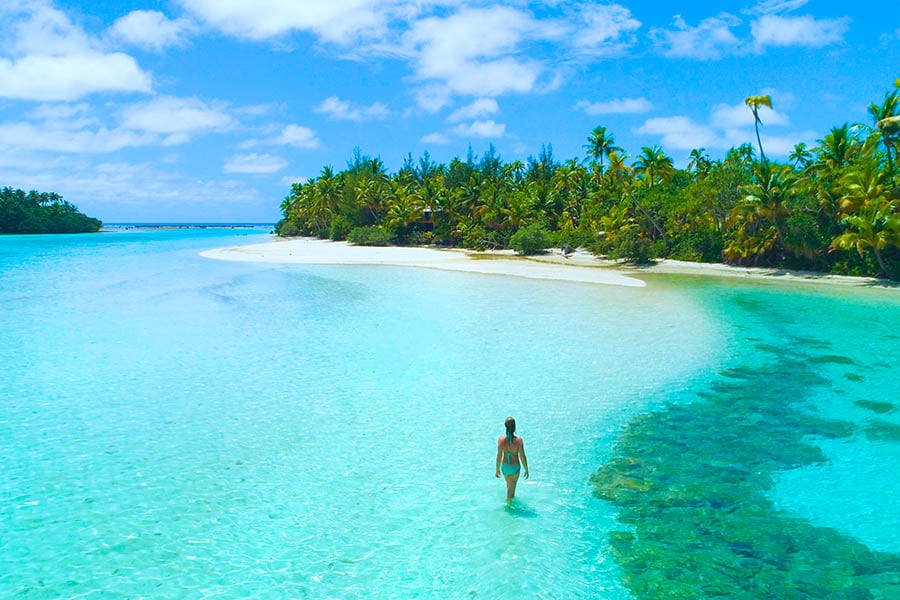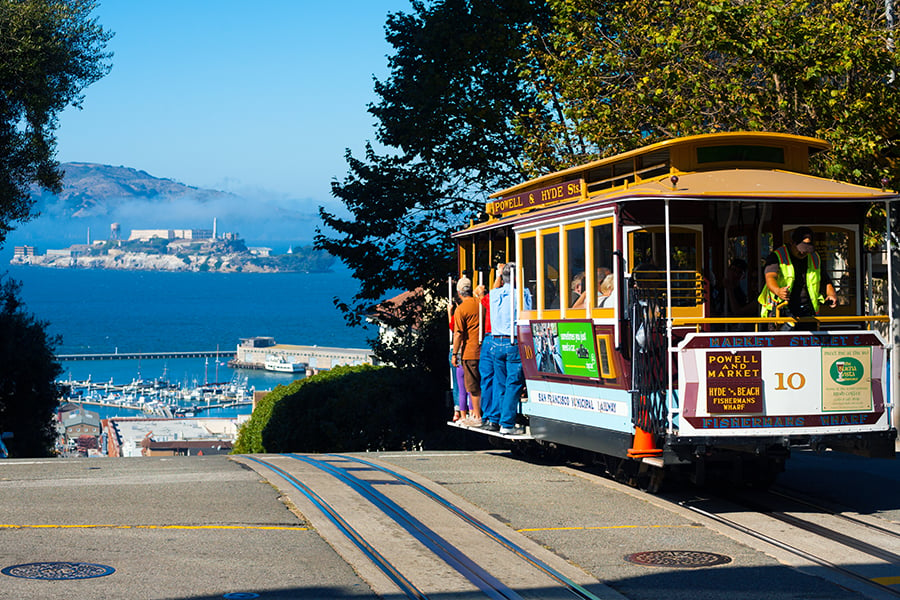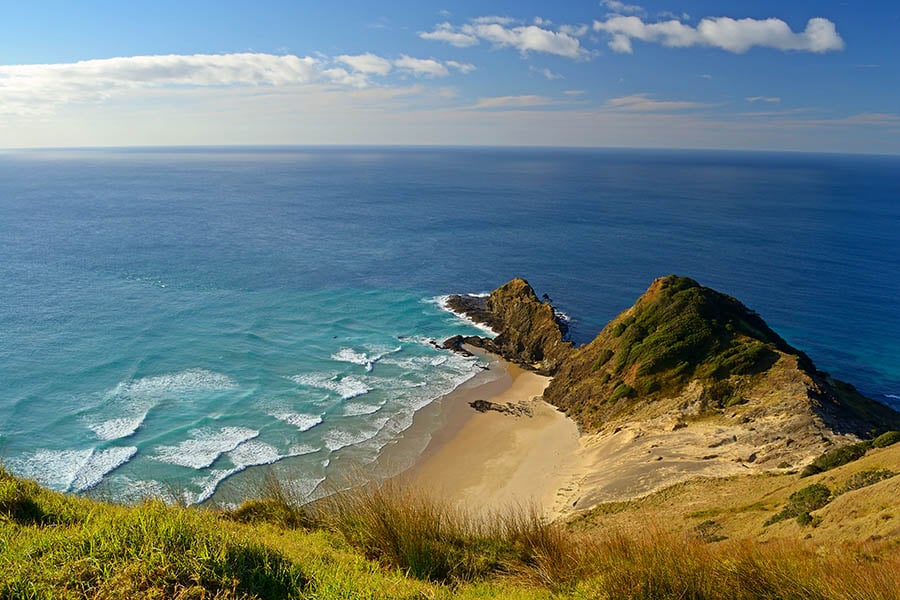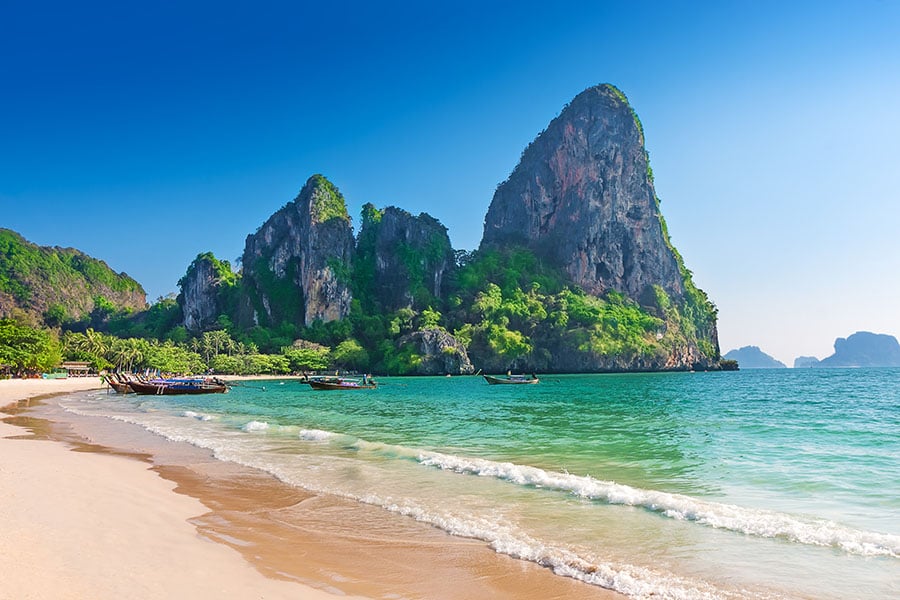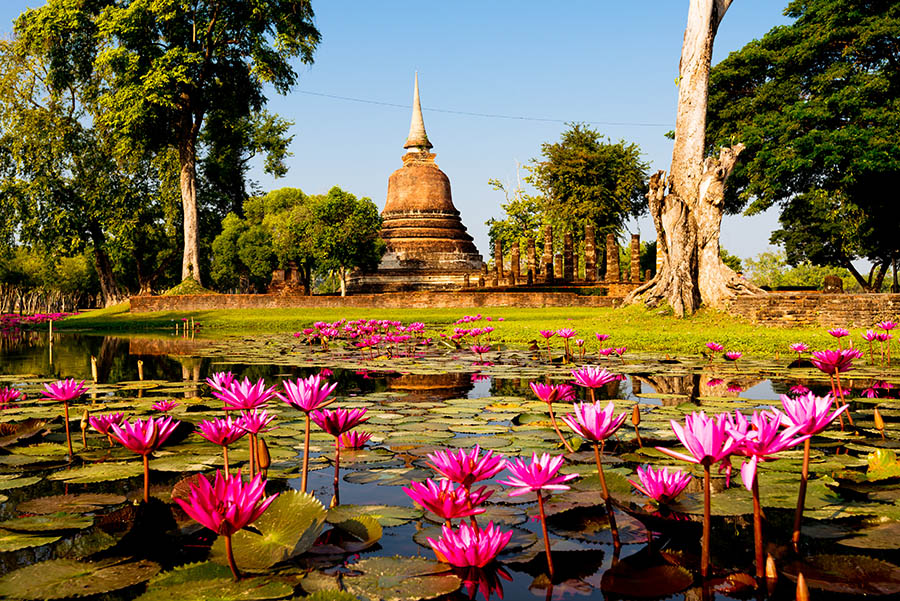My guide to visiting the Cook Islands
There is something magical about the Pacific and I have wanted to visit the Cook Islands ever since I started working in the travel industry nearly 30 years ago. When I finally managed to reach the Cook Islands earlier this year, I was not disappointed.
The Cook Islands is a small chain of paradise islands nestled in the heart of the South Pacific. These enchanting islands boast a vibrant and captivating Polynesian culture that has been passed down through the generations.

The Cooks are renowned for their warm-hearted and welcoming locals. As soon as you step foot on these islands, you'll be greeted with open arms and embraced as part of their extended family. The spirit of hospitality is deeply ingrained in Cook Islands culture, and we were made to feel very welcome.
Here’s my quick guide to visiting the Cook Islands – getting there, where to go, where to stay, and what to do.
Getting to the Cook Islands
We flew into Rarotonga on the inaugural flight of the new Hawaiian Airlines route from Honolulu to Rarotonga. After landing in Rarotonga, we were greeted with warm smiles and wonderful-smelling flower garlands. Our multi-island itinerary gave us a great mix of everything the Cooks had to offer.
Exploring Rarotonga
Rarotonga is the capital, the largest island, and the main transport hub of the Cook Islands. All international arrivals land in Rarotonga.
There is so much to see and do here, yet the island remains quiet and unspoiled. There are no traffic lights and no buildings taller than the highest coconut tree! Just one road circles the whole island, and it only takes 45 minutes to drive a full circuit.

On Rarotonga, you’ll find a good selection of accommodation ranging from simple family-run guesthouses to mid-range resorts and some excellent 4-star properties. On the west coast, the hotels boast incredible sunset views over the ocean, while you’ll see spectacular sunrises on the eastern side.
What becomes obvious quite quickly (and is quite wonderful!) is that the Cook Islands do not allow major international hotel and fast-food chains into their territory. This means that everything is locally owned and operated, which gives it an immediate and unique charm.

Muri Lagoon and snorkelling trip
Located on the southeast tip of Rarotonga, the Muri Lagoon is a beautiful spot for a day trip. There are several motus (small uninhabited islands) located inside the lagoon, as well as an outer coral reef. They have a wonderful tropical island feel to them.
We spent one of our spare days on Rarotonga enjoying a shared Muri Lagoon cruise. The day trip included a glass-bottomed boat trip out to the protected marine reserve. There was time for snorkelling (mask, snorkels and swimming fins were all provided) followed by a BBQ lunch on one of the uninhabited motus.
On the way out to the marine reserve, we saw turtles from the boat and the snorkelling was just amazing, with hundreds of colourful tropical reef fish. After an hour of snorkelling, I’d really worked up an appetite, so the open-fire BBQ lunch was most welcome. There was a tasty range of fresh fish, meats, and vegetarian options.
The whole day was a lot of fun and felt like a real castaway island experience. The friendly guides had well-rehearsed humorous routines, the snorkelling was excellent, and food was delicious.
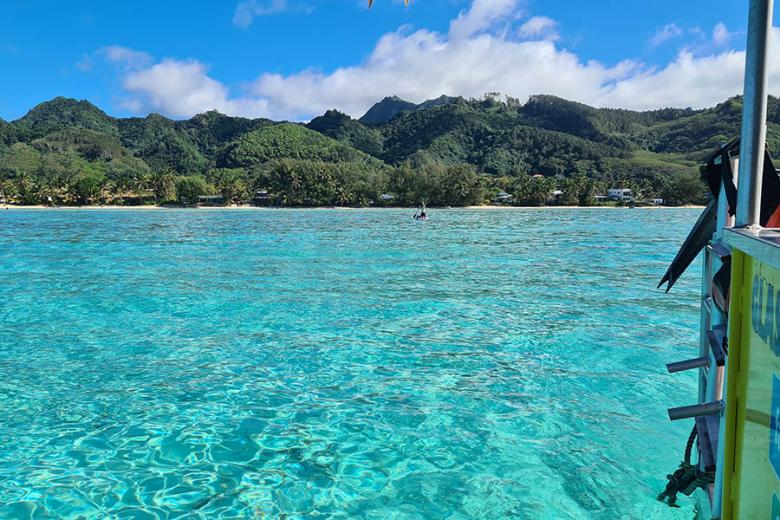
Ariimoana Walkabouts Tour
On Rarotonga, we took a wonderful day trip into the lush mountainous interior of the island. We crossed streams and riverbeds and walked through fruit and vegetable plantations. Whilst walking through the plantations, our guides (with permission from the owners) cut some tropical fruits straight off the trees and bushes for us to try. We ate pawpaw, passionfruit, mangosteen, three stages of coconut (new, dry, and sprouted!) and - my favourite - the custard apple (it tastes of custard!).

Next, we walked up one of the steep ridgelines to a lookout point with breathtaking views of the southern coast, the outer coral reef, and the Rua Manga “The Needle” rock formation. We also saw many types of flowers and beautiful birds and learned about rural life in Rarotonga.
We walked for several and, at some stages, it was fairly steep, but the track was well maintained, and sticks were provided. Our guides, Kura and Jack, were the ultimate hosts, and their local knowledge was just amazing.
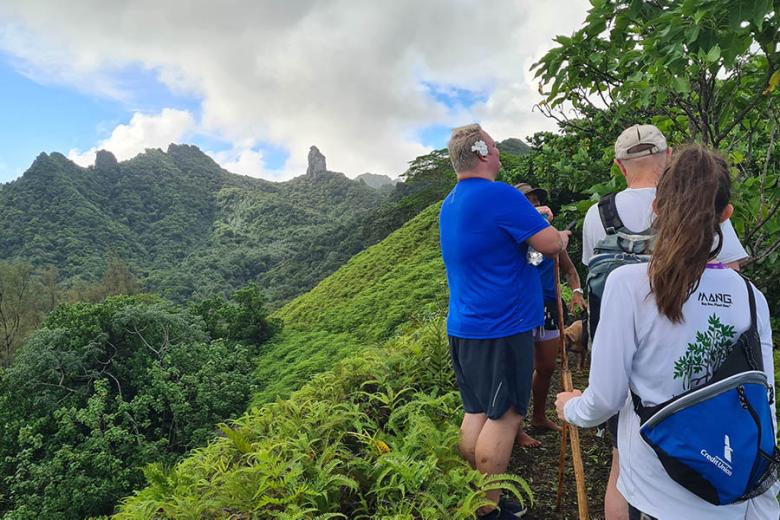
The Rarotonga Party Bus
If you’re interested in learning about the nightlife of the Cook Islands, you can’t miss Raratonga’s Party Bus. This is a converted minibus, complete with a pumping sound system and colourful flower garlands. It will take you on a low-key bar crawl that ends up with dancing at Rehab, Rarotonga’s largest nightclub.
This was such a fun experience for all ages. It isn’t a heavy drinking session, but rather a more laid-back evening visiting a few different beachfront bars, a pool hall and even a karaoke bar. I would highly recommend it!
Rarotonga’s Punanga Nui Market
The Punanga Nui Market located in Avarua (Rarotonga’s main town) is a great way to spend Saturday morning. There is free entertainment, fresh food stalls, organic coffee stalls, and authentic souvenirs like black pearls, art and craft work, hot sauces, and fisherman hats made of coconut fronds.
The market is open from 9am until midday, and early Saturday morning is the best time to go for locally grown fruits and vegetables as well as homemade treats like poke bowls. If you head over to the main stage area from about 10am, you can enjoy some live music and crowd interaction entertainment.
You can take the local bus to the market. The buses are easy in the Cooks, there are two and they go in opposite directions around the island, roughly passing every 30 minutes. There are no bus stops in the Cooks, you just wave at the oncoming big yellow bus. An adult single ride is $5 - cash only - and it’s an experience in itself.

Muri night market
There is also the Muri night market, located next to Muri Beach Village. This is a great option for buy your own cooking ingredients or just buying dinner from the various food trucks, stalls and stands. All the while, you can mix and mingle with tourists and locals alike.
Open Tuesday, Wednesday, Thursday, and Sunday evenings from 5pm, the night markets offer a variety of food from local BBQ meals, seafood, fresh drinking coconuts, chicken curries, wok-fried noodles, pizza, desserts, and more.
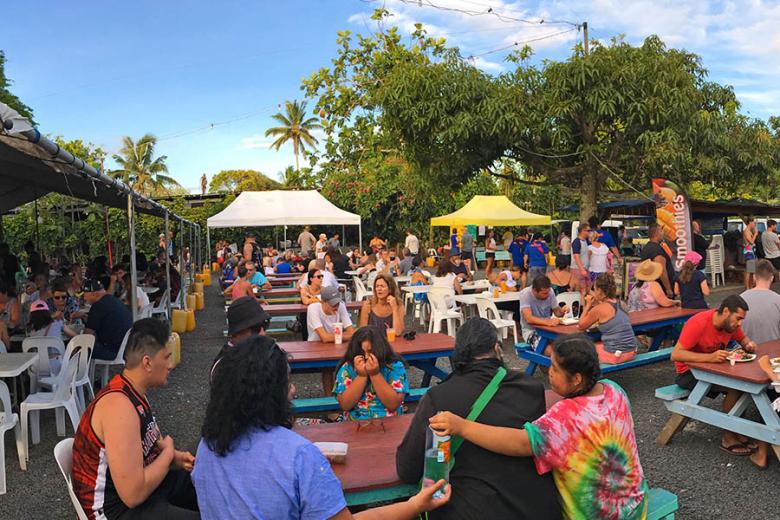
Mangaia
Mangaia Island is part of the Cook Islands Southern Island chain and is located southwest of Rarotonga, about a 40-minute flight away. The flight itself was a real treat - a small 15-seater propeller plane. The views were incredible!
Mangaia is the second largest island in the Cook Islands. Steeped in legend, it’s estimated to be the oldest island formation in the whole of the Pacific. With a population of only approximately 450 people, Mangaia has a small but very interesting and intimate tourism programme, which is focused around family life on the island.
If you want to experience an authentic grassroots Pacific Island and learn firsthand about the culture, history, and remote way of life from local guides and the resident Chief, Mangaia is the place to visit. I really enjoyed the contrast here to the more upmarket Rarotonga and Aitutaki.

We spent two nights at Babes Place, named by our main guide Ura, after her late brother whose nickname was Babe. It’s a simple two-star place, with clean and tidy chalet rooms and a kitchen and dining room in the main building, where we had breakfast and dinner in the evenings.
There are four or five separate chalet-type rooms, which are fairly basic, but perfectly clean, and functionable. One of the island’s few general stores is also walkable from here, making it very convenient.
On arrival, we were treated to a minibus tour around the island (Mangaia only has one road around it). We saw all the different provinces, while being accompanied by the wonderful singing and music of our guides and driver.

One morning, we took a two-hour historic inland walk across the interior of the island, crossing the volcanic ‘makatea’ - the sharp, volcanic rock terraces that cover the island. The beautiful interior is full of coconut trees, scrub bushes, orange trees, and pineapple bushes, as pineapples used to be Mangaia’s main export. We also saw the small wild pigs that roam freely on the island. Just be sure to wear walking shoes, rather than flip-flops.
We stopped for lunch at the Tuatini Rock Pools. Mangaia has very jagged rocks along its whole coastline, so isn’t well known for its beaches, but there are a few swimmable rock pools and beautiful coral coves. The island has a real wild charm and the lack of tourism makes it feel very special.
Next, we visited the Tuatini Cave complex. These impressive caves are filled with ancient stalactite and stalagmite formations, and our guide told us stories about how they were used as weapons during tribal warfare. The cave ceiling is reasonably high, so it doesn’t feel cramped or claustrophobic, and the walkway is reasonably flat. Head torches were also provided.
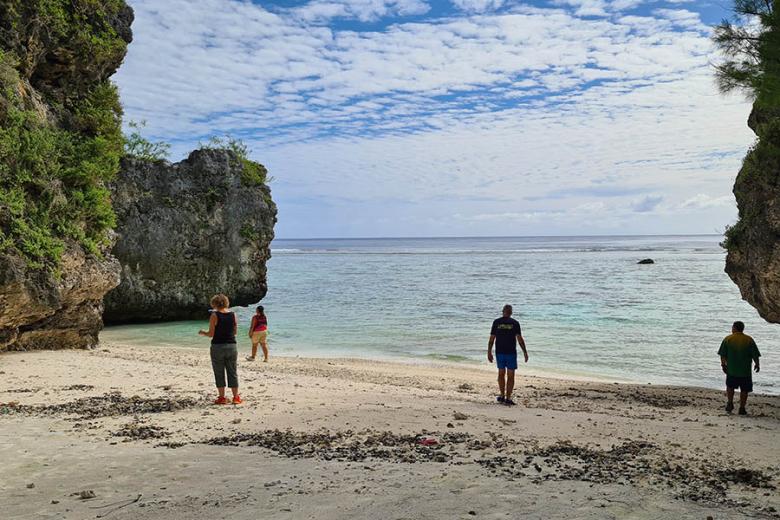
Aitutaki
No trip to the Cook Islands would be complete without a visit to Aitutaki, known as ‘The Jewel of the Cook Islands’. Compared to Rarotonga, Aitutaki is very quiet. With virtually no central township and only a couple of cafes and restaurants, it’s a real tropical paradise that captivates visitors with its breathtaking beauty and untouched natural wonders. It’s hard to believe that it’s only a 50-minute flight from Rarotonga.

Aitutaki is home to possibly the world’s most beautiful coral lagoon. Unlike Rarotonga, which has a mountainous interior, Aitutaki is a flat atoll-style island with a jaw-dropping central lagoon. It has a secluded and romantic castaway island feel about it. Bask in the sun, take leisurely walks along the white sands, or simply relax in a hammock. Aitutaki promises an unforgettable experience.
There are fifteen mostly uninhabited motus (islands) dotted around the edge of the huge crystal-clear turquoise lagoon, which is full of sea life and stunning corals. The lagoon is protected from the sea by its outer coral reef, so the water is relatively calm. It feels like a giant natural aquarium.

Lagoon and One Foot Island cruise
A lagoon cruise is an absolute must when visiting Aitutaki. We took a day trip excursion that included a lagoon cruise, a snorkelling session, and a BBQ lunch at One Foot Island. The snorkelling was sublime, and we saw large corals in great condition, teeming with colourful tropical fish and giant clams.
We had a lovely BBQ lunch on One Foot Island, a famous uninhabited motu with dreamy white sandbars surrounded by clear turquoise waters. Be sure to bring your passport as you can legally get it stamped here with a cute One Foot Island stamp, at possibly the world’s most beautiful post office.

Almost all the hotels and resorts around Aitutaki offer free paddleboards or kayaks, as the waters immediately offshore are calm and protected by the outer reef. Our hotel was located on the west coast of Aitutaki, so we were treated to stunning sunsets.
On a clear night, it’s a wonderful place to see the mesmerizing spectacle of the South Pacific night sky, as countless stars illuminate the heavens in a way rarely seen in more urbanized areas.

Food and drink in the Cook Islands
The local cuisine of the Cook Islands is very good indeed. If you get a chance, don’t hesitate to try taro, a native root plant, and ‘liang’, a side dish made of the taro’s spinach-like leaves mixed with coconut cream. Yum!
Fresh tuna is a staple food and it’s served either fried, or raw in the poke bowls, at most meals. The giant fried fish sandwiches served at The Islander Bar in Rarotonga were also something to behold!

As well as its own abundant seafood, the cuisine of the Cook Islands is also heavily influenced by New Zealand imports. You’ll find great NZ beef and lamb options, combined with beautiful NZ wines. The vegetarians and vegans in our group didn’t seem to struggle at all for choice during their stay.
The local ‘Rarotonga Brewery’ brews its own clean and crisp lager, which is served everywhere in the Cooks. You can even visit their small brewery on Rarotonga for a short tour and tasing session. It’s another wonderful experience!

Church culture in the Cook Islands
Church is a big part of daily life in the Cook Islands. As tourists, you’re welcome to visit the Sunday morning services, but be sure to dress smartly (no vest tops or flip flops). The traditional songs and hymns are sung by the locals in a way that will send shivers down your spine. It reminded me of the South African singing style made famous by Ladysmith Black Mambazo.

Festivals in the Cook Islands
Throughout the year, the Cook Islands come alive with vibrant cultural festivals and celebrations. The biggest event is the Te Maeva Nui Festival, which takes places at the beginning of August. It commemorates the nation's independence and showcases a spectacular display of traditional arts, dance competitions, and sporting events. These festivities offer an immersive experience, providing visitors with a glimpse into the heart and soul of the Cook Islands.

Cook Islands as part of a multi-stop trip?
The Cook Islands are very easily linked to New Zealand and Australia, so they make a great stop on a round the world holiday. There are also infrequent (once a week) flights to French Polynesia, as well as Hawaii.
This is a wonderful destination for a few nights on the beach to break up a larger multi-stop trip to NZ and Australia. However, you can easily spend a week or more island-hopping and immersing yourself in the enchanting culture of the Cook Islands.

Ready to plan a trip to the Cook Islands?
We can put together tailor-made South Pacific escapes and round the world holidays of all shapes and sizes. If you would like to start planning your own trip of a lifetime, simply get in touch on 1273 320 580 or send us a quote request by email.

Barefoot bliss: 9 Cook Islands luxury resorts

Annette Morrissey
Travelling friend
at Travel Nation

8 Authentic experiences in the Cook Islands

Naomi Osborne
Travelling friend
at Travel Nation
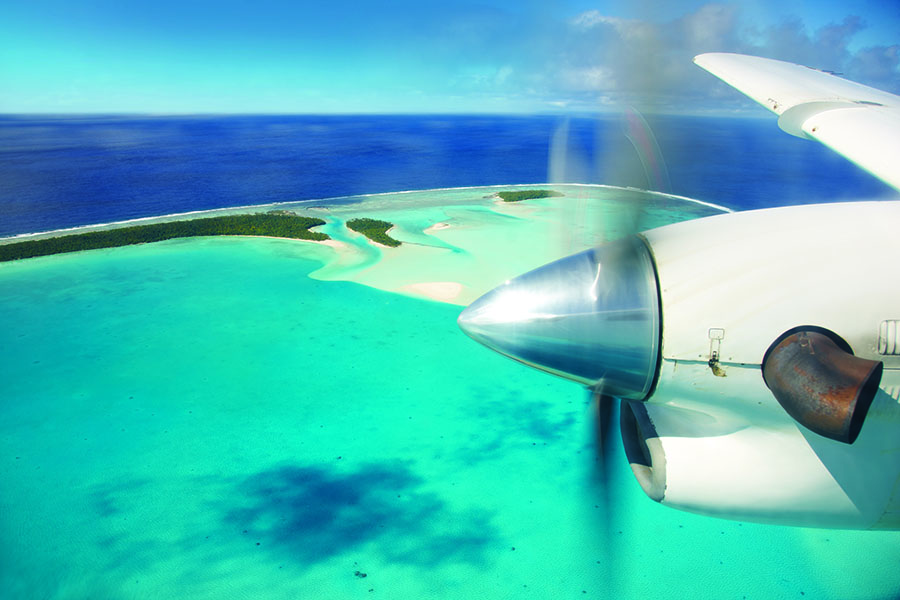
Visit the Cook Islands: a quintessential South Pacific paradise

Chris West
Senior Travel Consultant
at Travel Nation

About the author Jim Faulkner
Senior Travel Consultant
Starting his exploration at 19, Jim has travelled around the world several times. Since having a family, his travel plans have become a little shorter and more organised! He has had some great experiences around the world from sailing through Halong Bay in Vietnam to relaxing in a villa in the Maldives and driving down to the Florida Keys with his kids. He is familiar with the loveable chaos of family life and knows how difficult it can be to find time to plan a trip, which is why he enjoys helping parents plan an itinerary that will ensure everyone has a fantastic trip. Jim has over 20 years’ experience in the travel industry and joined Travel Nation in 2015 as a round the world specialist.

